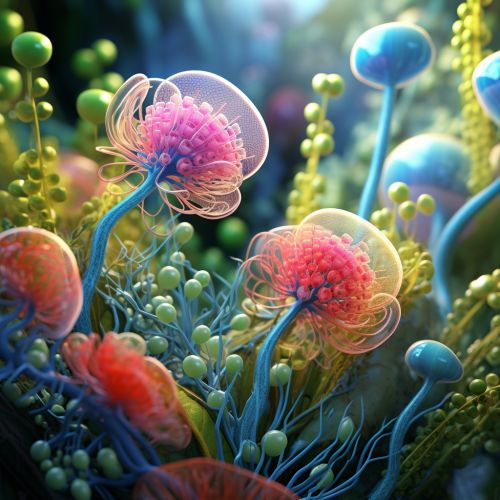Effector-Triggered Immunity
Introduction
Effector-Triggered Immunity (ETI) is a second line of plant defense against pathogens. It is a more specific and stronger response than the basal defense response, known as Pattern-Triggered Immunity (PTI). ETI is characterized by the recognition of specific pathogen effectors by plant resistance (R) proteins. This recognition often results in a hypersensitive response (HR), which is a form of programmed cell death at the site of infection, limiting the spread of the pathogen.
Effector Proteins
Effector proteins are molecules secreted by pathogens that can alter the host cell's structure and function, allowing the pathogen to suppress the host's immune response and establish infection. In the context of ETI, these effectors are recognized by the plant's R proteins, triggering a strong immune response. The specific interaction between an effector and an R protein is often referred to as a gene-for-gene relationship.


Resistance Proteins
Resistance (R) proteins are a class of proteins in plants that play a crucial role in ETI. They are able to recognize specific pathogen effectors and trigger a strong immune response. R proteins are typically composed of a nucleotide-binding site (NBS) and leucine-rich repeats (LRRs). The NBS is involved in ATP or GTP binding and hydrolysis, while the LRRs are involved in protein-protein interactions and are likely responsible for the recognition of specific effectors.
Hypersensitive Response
The hypersensitive response (HR) is a form of programmed cell death in plants that occurs at the site of pathogen infection. It is one of the key features of ETI and serves to limit the spread of the pathogen by killing the cells in which the pathogen is present. The HR is often visible as localized cell death or tissue necrosis. It is accompanied by the production of reactive oxygen species (ROS) and the strengthening of the cell wall through the deposition of callose and lignin.
Signal Transduction in ETI
Upon recognition of a pathogen effector by an R protein, a signal transduction pathway is activated, leading to the HR and other defense responses. This pathway involves several components, including calcium ions, mitogen-activated protein kinases (MAPKs), and various transcription factors. These components work together to amplify the signal and initiate the defense responses. The exact mechanisms of this signal transduction pathway are still a topic of active research.
Role of ETI in Plant Defense
ETI plays a crucial role in plant defense against pathogens. It provides a strong, localized response to infection that can effectively limit the spread of the pathogen. Moreover, the specificity of ETI allows plants to mount a targeted response against specific pathogens, based on the recognition of their unique effectors. This specificity is achieved through the diversity of R proteins in plants, which can recognize a wide range of effectors.
Challenges and Future Directions
Despite the crucial role of ETI in plant defense, there are still many challenges to be addressed in this field. One of the main challenges is the constant evolution of pathogens, which can alter their effectors to avoid recognition by R proteins. This leads to a constant arms race between plants and pathogens, with each side continuously evolving to overcome the other. Future research in this field will likely focus on understanding the molecular mechanisms of ETI, identifying new R proteins and their corresponding effectors, and developing strategies to enhance ETI in crop plants for improved disease resistance.
